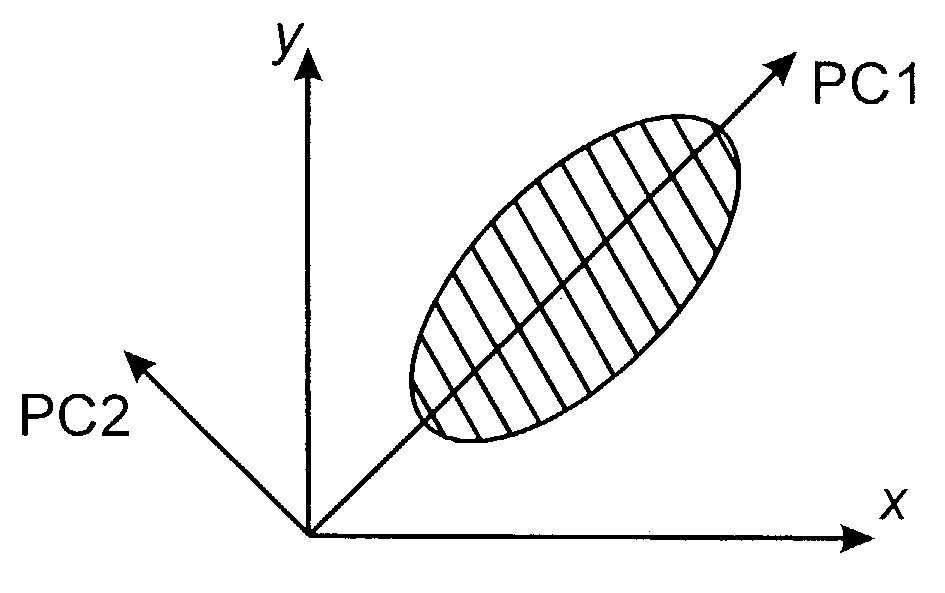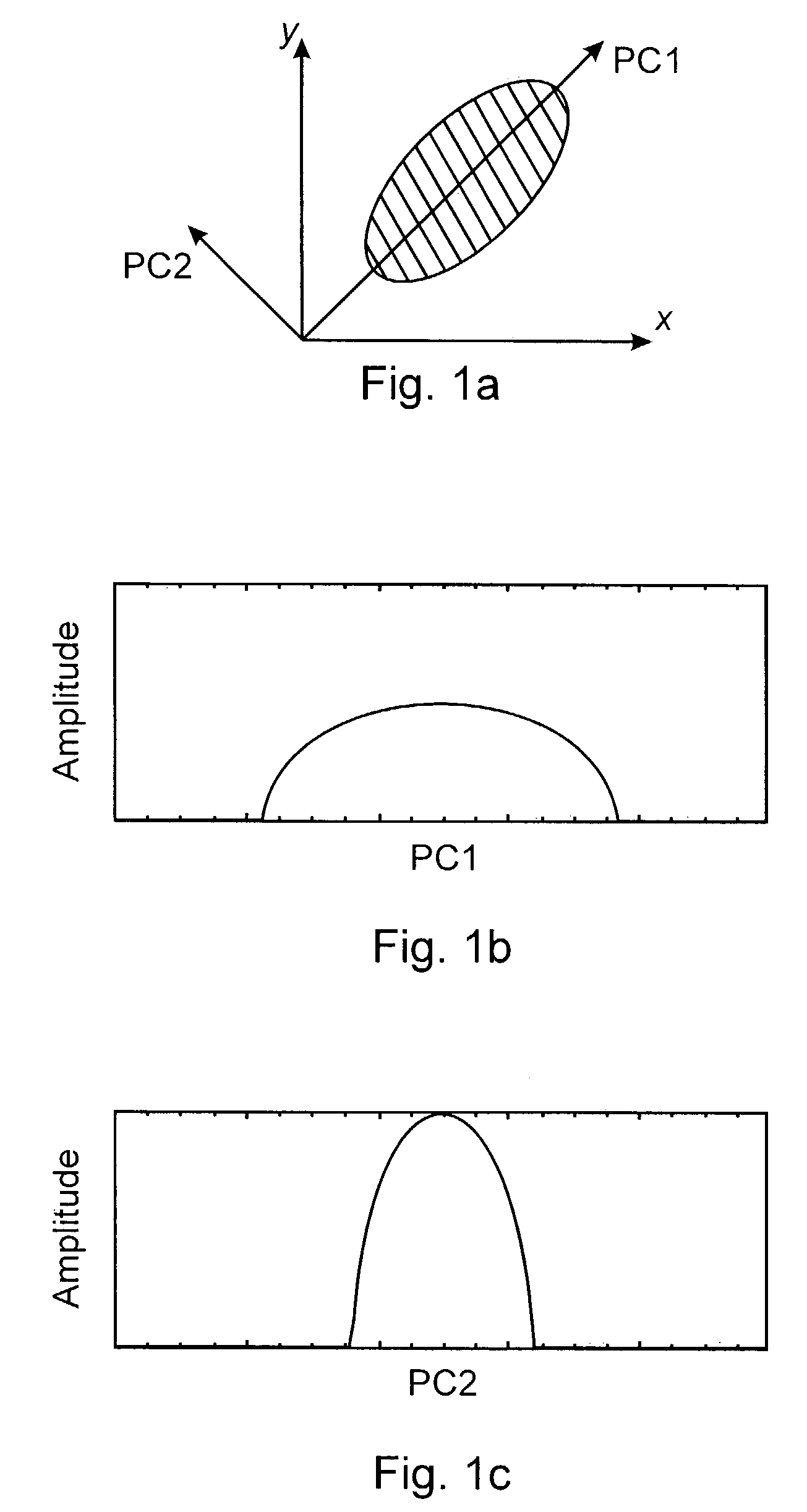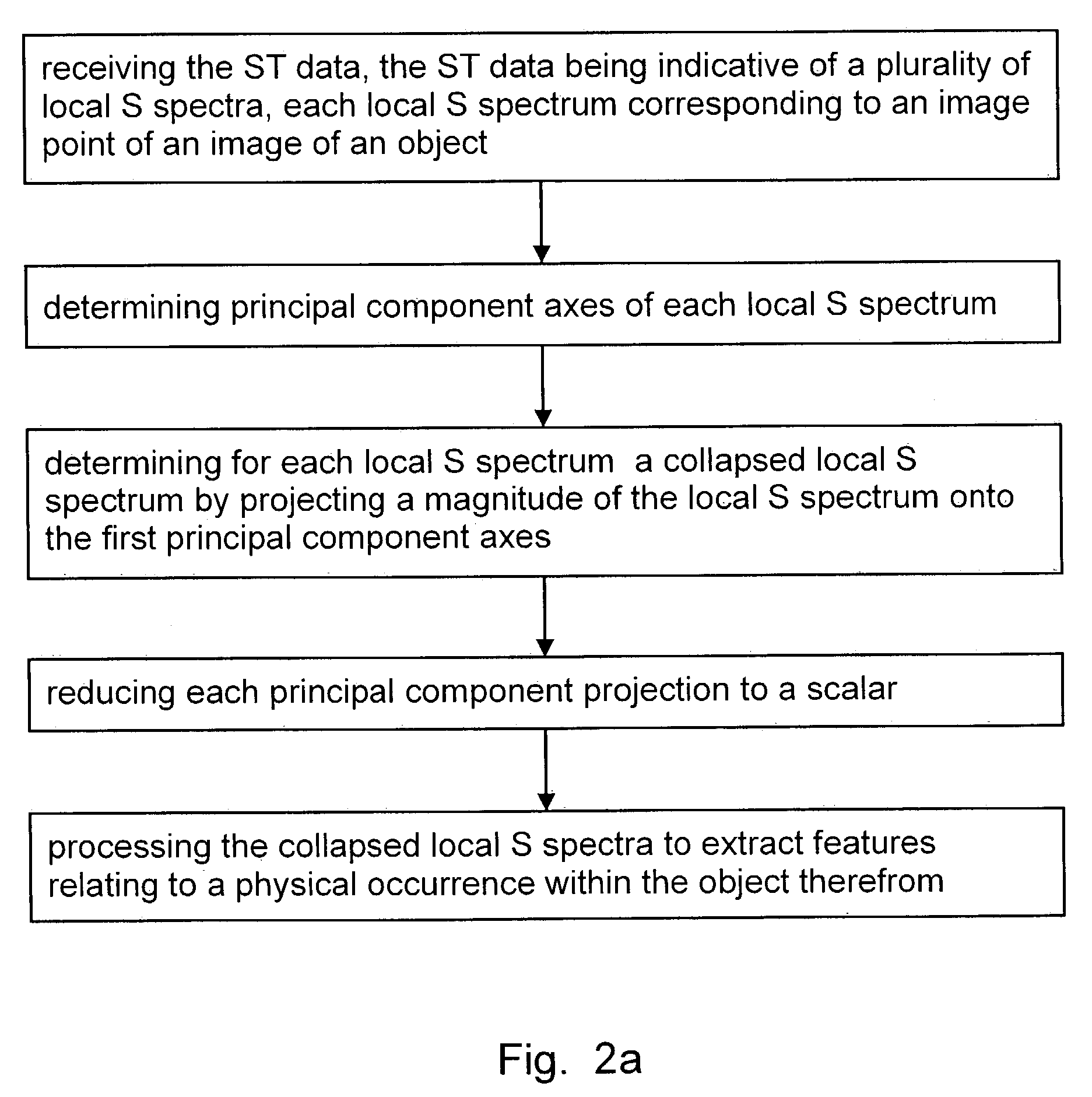Visualization of S transform data using principal-component analysis
a transform data and principal component analysis technology, applied in the field of visualizing transform data, can solve the problems of reducing the usefulness of both gt and wt in the analysis of imaging signal data, unable to interpret time-scale representation of a signal, and not providing sufficient information in standard fourier analysis, so as to achieve better capture local spectral information
- Summary
- Abstract
- Description
- Claims
- Application Information
AI Technical Summary
Benefits of technology
Problems solved by technology
Method used
Image
Examples
Embodiment Construction
[0030]Hereinbelow, the method for visualizing ST data according to the invention is disclosed describing processing of ST data of 2D images. It is evident to those of skill in the art based on the explanation below that the method for visualizing ST data according to the invention is not limited thereto but is also applicable for the processing of higher dimensional image data such as 3D images or time varying 3D images resulting in 4D image data. Furthermore, the method for visualizing ST data according to the invention provides means for directly visualizing local frequency content of other 2D data such as 1D spatial series evolving over time, where the local frequency content is calculated using the S transform or other localized transforms such as Gabor or Wavelet transforms.
[0031]The method for visualizing ST data according to the invention is based upon principal-component analysis (PCA) of a local spectrum. The PCA aligns a 2D data set or image with its principal eigenvectors...
PUM
 Login to View More
Login to View More Abstract
Description
Claims
Application Information
 Login to View More
Login to View More - R&D
- Intellectual Property
- Life Sciences
- Materials
- Tech Scout
- Unparalleled Data Quality
- Higher Quality Content
- 60% Fewer Hallucinations
Browse by: Latest US Patents, China's latest patents, Technical Efficacy Thesaurus, Application Domain, Technology Topic, Popular Technical Reports.
© 2025 PatSnap. All rights reserved.Legal|Privacy policy|Modern Slavery Act Transparency Statement|Sitemap|About US| Contact US: help@patsnap.com



